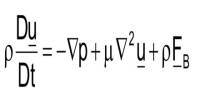Musical acoustics, often known as music acoustics, is an interdisciplinary field that draws on information from various disciplines such as physics, psychophysics, organology (instrument classification), physiology, music theory, ethnomusicology, signal processing, and instrument building. It is a subfield of acoustics that studies the physics of music, namely the production, transmission, and reception of sound waves in musical instruments and their interaction with the human auditory system.
As a subfield of acoustics, it is concerned with researching and understanding the mechanics of music, or how sounds are used to create music. Areas of research include the function of musical instruments, the human voice (the physics of speaking and singing), computer analysis of melody, and the clinical application of music in music therapy.
Hermann von Helmholtz, a nineteenth-century German polymath who was an outstanding physician, physicist, physiologist, musician, mathematician, and philosopher, was a pioneer in music acoustics. His work On the Sensations of Tone as a Physiological Basis for the Theory of Music is a groundbreaking collection of investigations and approaches that provided a completely new viewpoint on music theory, musical performance, music psychology, and the physical behavior of musical instruments.
It encompasses various aspects of sound and its perception in relation to music, including the following:
- Sound Production: Musical instruments produce sound through various mechanisms such as vibrating strings (e.g., guitar, violin), vibrating columns of air (e.g., flute, trumpet), and vibrating membranes (e.g., drums). Understanding how these vibrations generate sound waves is fundamental in musical acoustics.
- Acoustic Properties of Instruments: Different musical instruments produce sounds with distinct timbres due to variations in their size, shape, materials, and construction. Musical acoustics investigates how these factors affect the frequency spectrum, resonance, and overall sound quality of an instrument.
- Pitch and Frequency: The perceived pitch of a sound is determined by its frequency, with higher frequencies corresponding to higher pitches. Musical acoustics examines the relationship between the physical properties of vibrating objects and the resulting pitch of the sound they produce.
- Harmonics and Overtones: Musical tones are typically composed of a fundamental frequency followed by a sequence of harmonic overtones. Understanding the creation and perception of these overtones is critical for assessing the timbre and character of musical sounds.
- Psychological Perception of Sound: Musical acoustics addresses not only the physical aspects of sound waves, but also how humans perceive and interpret musical sounds. This includes themes like pitch perception, tonal fusion, and the impact of cultural and individual differences on auditory perception.
Overall, musical acoustics research sheds light on the science underlying the creation and perception of music, bridging the gap between physics, psychology, and the art of music performance.
















